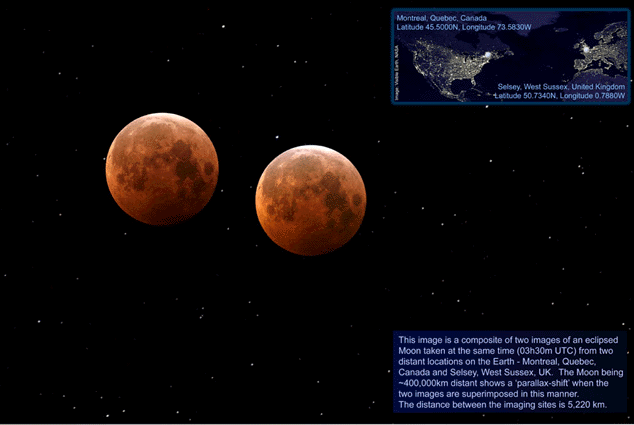Offset Moon

Explanation:
Determination of the distances to the stars and galaxies beyond our own is one of the greatest intellectual triumphs of humanity. Measuring parallax - the movement of a nearby star relative to distant stars - is the foundation of all our knowledge of the size of the universe. But the distance to even the nearest stars is so great that the discovery of stellar parallax was not accomplished until 1838. However, the parallactic offset of a nearby astronomical object like the Moon is much easier to demonstrate. In this composite of two images of the eclipsed Moon, taken simultaneously by Pete Lawrence in England and by Pete Cleary, 5220 km away in Montreal, Canada, shows that the Moon shifted about 1.3 times its diameter or about 40 seconds of arc. These data yield a distance to the Moon of 453,168 km - considerably beyond the correct value of about 384,000 km. Actually this experiment has been done before, by the ancient Greek astronomer Hipparchus, whose error was only 36,000 km - twice as good as my estimate!
